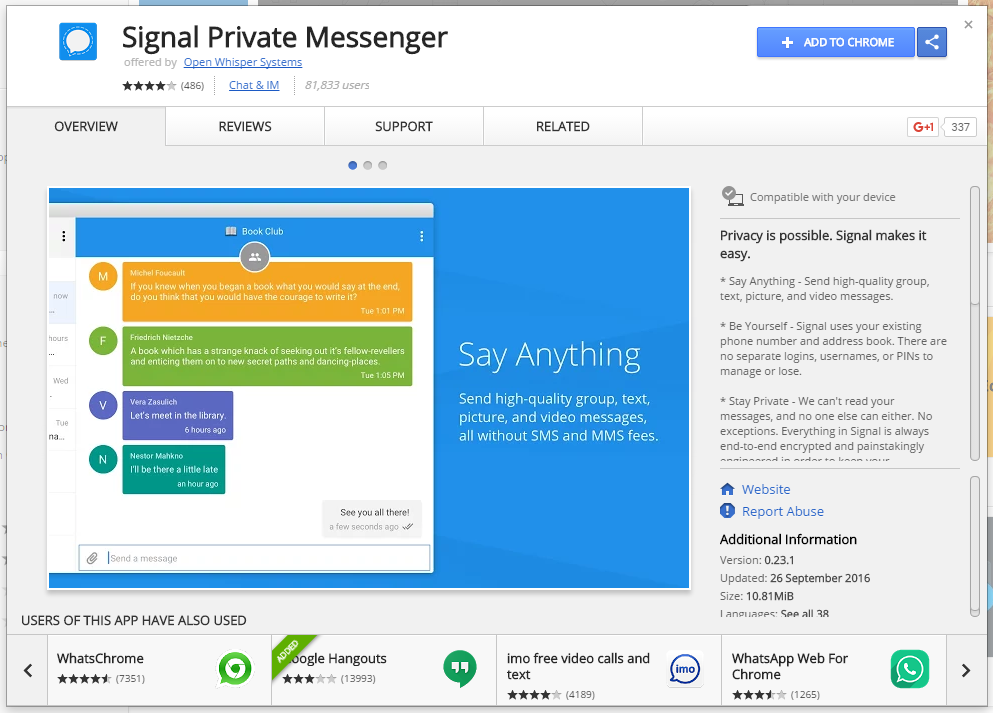

Now the Node.js stuff is installed in /usr/local/bin/node so we can remove the ~/node directory to free up some disk space.Īpart from Node.js another thing we need is the RingRTC library built for arm64. # Changed to -j2 because -j4 used too much memoryĪfter that, we can check it by running node -version which should output the version number “v14.16.0”.
Signal desktop iphone windows install#
To build and install Node.js version 14.16.0 on the Librem 5, we can do this: git clone The Node.js version that Signal wants currently is 14.16.0 and the source code is at with instructions at Node.js is some large javascript thing which I am not very familiar with, but it turned out that it is straightforward to build, it only takes a long time.

Starting from the build instructions at that says “First, you’ll need Node.js which matches our current version”. Let me know if it does not work for you, then I will try to add any missing pieces. It is a little tricky because the usual version of Signal Desktop is for the x86_64 architecture, while the Librem 5 has a aarch64 (also called arm64) CPU so we need a aarch64 build of the program.Ī word of warning if you are going to try this: the instructions here are my best attempt at putting everything together after getting it to work, I might have missed some part(s). This is about the “desktop” version of Signal, the idea being that the Librem 5 is like a regular computer (not Android and not iOS) and therefore the mobile Signal app cannot be expected to work (because that is only for Android or iOS), however Signal Desktop can work. TL DR: a bit messy to install, but it does work, to some extent.Ī lot of this is based on but modified as needed. Here is the story of my efforts to try out Signal on the Librem 5.


 0 kommentar(er)
0 kommentar(er)
